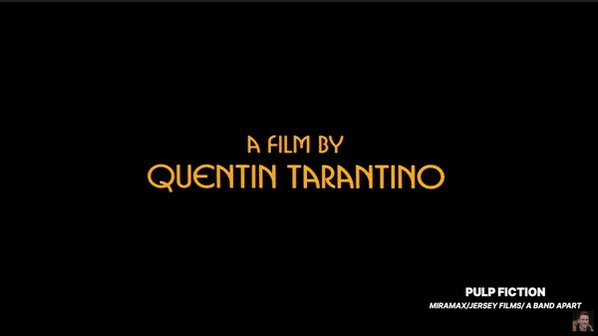It’s counterintuitive, but the more we imitate others, the faster we can discover our unique style.
Modern creators do the opposite though.
They stubbornly insist on originality, which they hold as their highest virtue — even when it comes at the expense of quality.
What does productive imitation look like?
Look at Quentin Tarantino. When people think of him, they see a singular talent for making original movies.
But he's famous for building upon scenes from other movies, and once said: “I steal from every single movie ever made.”
From Tarantino, we learn that creators consume art differently from consumers.
Directors watch movies not just to be entertained, but also to see how they’re made.
Watching helps them develop their own mental Pinterest board of ideas to borrow and build upon in their own work.
George Lucas is another productive imitator.
To create Star Wars, he built upon the teachings of Joseph Cambell. In order to align the story with motifs that’d reverberated through so many human cultures, Lucas re-wrote his draft of Star Wars to align it with Cambell’s work.
We've long known that humans are imitative creatures.
The etymology of the word “imitate” is one of my favorites. During the time of Shakespeare, the word “ape” meant both “primate” and “imitate.”
Maybe the etymology indicates that knowledge of imitation is core to who we are.
The twin rise of the printing press and mass schooling, led us to disproportionately value knowledge that could be shared in textbooks.
The transmission of technique and tacit knowledge, both of which are best learned through imitation, was lost in the process.
When should you embrace imitative learning?
The more you’re drawn to learning the skill on YouTube, the more you’ll benefit from imitative learning. “YouTube skills” are usually hard to describe in words.
Nobody learns to dance by reading a textbook.
I once met a painting coach who tells students to copy their favorite artists.
At first, students resist.
In response, the coach tells them to listen for friction. “Do you hear that resistance? It’s the whisper of your unique style.”
Through imitation, we discover our voice.
Imitation helps all kinds of craftsmen.
It’s what Kobe Bryant was doing when he studied and adopted the moves of history’s greatest basketball players.
In fact, Kobe once said: “I seriously have stolen all my moves from the greatest players.”
https://t.co/i4aOqVW3FJ
Sigmund Freud is known as one of the most original psychologists in history, but most people aren’t aware of how much he pulled from Nietzche.
Concepts like repression, instinctual drives, the unconscious mind, and the symbolism of dreams are rooted in Nietzche’s work.
When people conflate copying for imitation, we end up with a homogeneity of style that robs society of individualism.
Today, patterns of blind imitation are most evident in the design industry where it seems like every Fortune 500 company is using the same caricature drawings.
With social media, the effects of imitation are more pernicious.
The platforms incentivize a homogenous creative style.
Twitter rewards short sentences and bold, aggressive statements. YouTube rewards fast-paced and high-energy videos that are nothing like your average movie.
How can "Imitate, then Innovate" make you a better creator?
1) Find people you admire and deconstruct their style.
2) Remember that pursuing originality too directly can paralyze you creatively.
3) Pursue loftier ends than originality — such as usefulness, beauty, or quality.
If you want to learn more about this theory, I just published a long-form essay about it.
Ideas that aren't mentioned in the thread:
∙ What I learned from Leonardo da Vinci
∙ The two kinds of imitation
∙ Lessons from
@patrickc and Stripe
https://t.co/U2wEO4aHDi
If you're ready to improve your writing, sign up for my free 50-day email series.
I'll teach you the basics of online writing and help you implement the "Imitate, then Innovate" method.
https://t.co/5WGbzPMewZ


